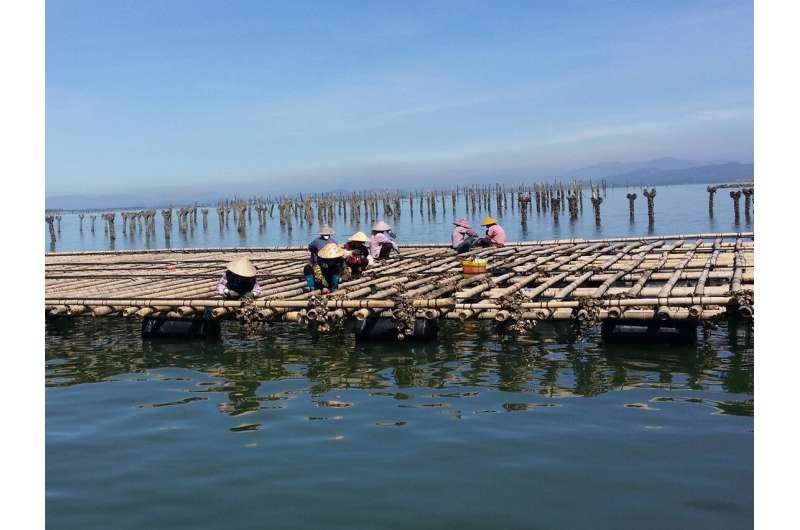Microplastics from ocean fishing can 'hide' in deep sediments

Microplastic pollution in the world's oceans is a growing problem, and most studies of the issue have focused on land-based sources, such as discarded plastic bags or water bottles. Now, researchers reporting in ACS' Environmental Science & Technology have linked microplastics in China's Beibu Gulf with heavy fishing activities. Surprisingly, many of the particles were hidden in deep sediments on the ocean floor, which could have led scientists to underestimate the extent of the contamination.
Fishing gear, such as nets, ropes and pots, is a potential sea-based source of microplastics. The tiny particles could be worn away from fishing gear during use, or they might arise when the gear is lost or discarded in the ocean. Yinghui Wang and colleagues wanted to measure microplastics in surface sediment samples from different sites in Beibu Gulf, a traditional fishing ground of China and the China-Indo peninsula that lacks substantial industrialization and urbanization. They also wanted to look for this type of contamination in deep sediments, up to 2 feet below the surface, which have not been well studied with respect to microplastic pollution.
The researchers collected 52 sediment samples from Beibu Gulf and adjacent rivers in July 2017. Microplastics were separated from sediment samples and counted under a microscope. Most of the particles were made of polypropylene (PP) or polyethylene (PE), which are materials widely used in fishing nets and rope. The team found a strong correlation between the intensity of fishing activities, such as capture fishing or mariculture, and the abundance of PP and PE fibers. Unexpectedly, microplastics were detected even one foot below the surface, which corresponds to about the year 1913 (before the observed plastics were invented). The particles could have been transported to deep sediment layers by marine worms. Because most previous studies have considered only microplastics in surface sediment, this type of pollution in ocean sediments worldwide could be greatly underestimated, the researchers say.
More information: "Underestimated Microplastic Pollution Derived from Fishery Activities and 'Hidden' in Deep Sediment" Environmental Science & Technology (2020). pubs.acs.org/doi/abs/10.1021/acs.est.9b04850
Journal information: Environmental Science & Technology
Provided by American Chemical Society





















